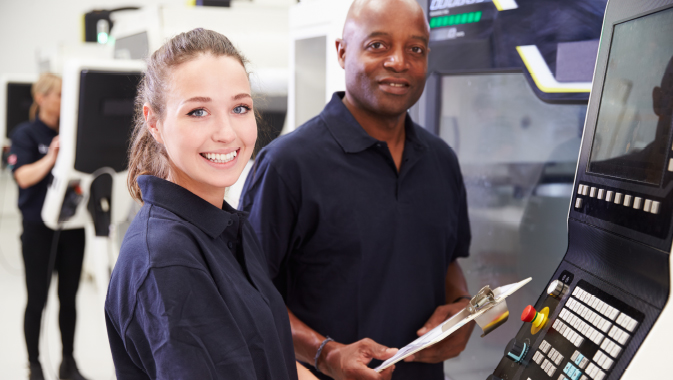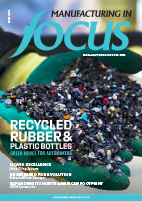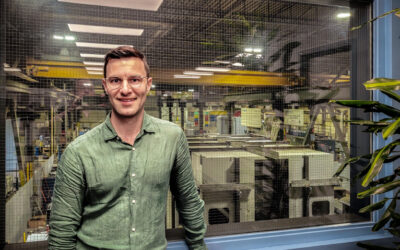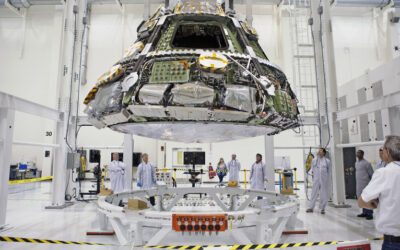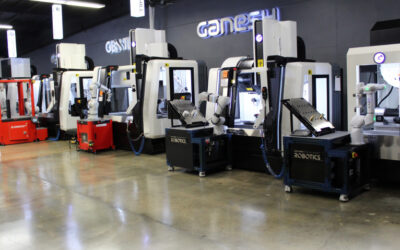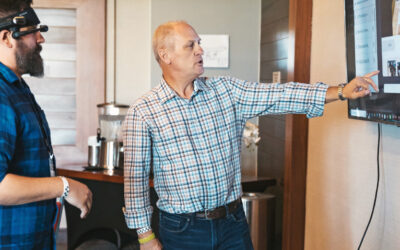Over the last few decades, the American manufacturing industry has seen tremendous growth. As the economy improves and the drive to re-shore overseas facilities continues to bring manufacturing jobs back to U.S. soil, the one chief limiting factor on growth is a dwindling talent pool.
According to a study conducted by international professional services firm Deloitte, of the 4.6 million manufacturing jobs that are expected to be created over the next ten years, the American workforce will only be able to fill about half of them. The industry needs an influx of workers.
Among the manufacturing workforce, women are vastly underrepresented. They make up roughly half of all American workers but account for less than one-third of those working in the manufacturing field. With more than half a million manufacturing jobs currently unfilled, the need to bring more women into the workforce is growing by the day.
Fortunately, an increasing number of women who have built successful careers in the field are forming organizations and initiatives to help guide others, and this focus on guidance might be the perfect solution to the problem. A study by the Society of Women Engineers in 2017 found that many women who start a science, technology, engineering, or mathematic (STEM) course in college leave before it is completed or leave the field after graduating. Over thirty-two percent switch to another major during school and only thirty percent of the women who graduate from those courses are still working in STEM jobs after twenty years.
The research found that one of the main reasons women leave those positions has been a lack of mentorship. Organizations aiming to help women understand the value of a career in manufacturing and navigate the challenges associated with building one are turning the tides.
While the number of women changing course on a STEM career is still far too high, trends are moving in a positive direction. The total number of bachelor’s degrees awarded in STEM fields increased by forty percent between 2007 and 2017. The number earned by women over that same period increased by fifty-eight percent. Women are entering manufacturing jobs at a higher rate than ever before, and some of those who have already found their home within the industry are working to increase that number further still.
Many women who have built successful careers in the manufacturing industry have seen the talent gap as an opportunity to be mentors. It is a chance to tell their stories and to communicate the reality of a career in manufacturing to young women who may have had their view of the field tainted by antiquated stigmas. The traditional ‘It’s a dirty job, but somebody has to do it,’ image associated with manufacturing is obsolete.
It is not dirty, dangerous, or unfulfilling. It is clean, safe, exciting, at the forefront of advanced technology, pays well, and can be a very fulfilling career path. In a report released by an organization called Women In Manufacturing, only seven percent of respondents listed manufacturing as a career path that provided opportunities for women. It is time to change that perception.
Today’s manufacturing industry is operating at the leading edge of innovation. It is a thrilling field with unlimited potential for a rewarding career. Industry groups and other stakeholders have been investing time and funding in outreach and workforce development programs designed to share this message with students throughout the United States as early as possible, in some cases, before they even enter high school. These outreach programs are committed to building a diverse future workforce, and they are being held from coast to coast.
The industry is growing and is positioned to continue that trajectory going forward, but without people to fill those positions, that growth will stall. Industry leaders are hoping that by holding these events for young women, they can bridge the labour gap that has put such a strain on that growth. Women in Industry held its fourth annual conference this year, seeing 1,300 attendees, up from two hundred in its first year. This, like many similar events, is an opportunity for students to network and learn more about the many high-demand, high-wage career prospects waiting for them in manufacturing.
In September, Women in Manufacturing held a three-day-long national convention called Summit 2019. The convention hosted keynote presentations, networking events, roundtable discussions, and even plant tours. It attracted executives from some of the world’s top companies to provide advice and guidance to women who are building careers in manufacturing, and this was just one among many events being held throughout the United States to help women navigate the challenges of advancing their careers in the manufacturing industry.
STEP Ahead – standing for science, technology, engineering, and production – is an initiative from the Manufacturing Institute that aims to promote the role of women in the manufacturing field through mentorship programs and annual award ceremonies. Since 2013, the program has honoured hundreds of women with awards for their accomplishments in the STEP fields.
The institute also hosts STEP Forward, a networking event that aims to help manufacturers develop strategies to acquire and retain female talent. These events have been held in about a dozen locations over the course of the last year.
Bringing more women into manufacturing positions might be the key to solving the skills gap, but research has shown that improving gender diversity is also the secret to improved productivity. According to a study released last year by the Boston Consulting Group, companies with diverse leadership have better innovation and financial performance. As women find their way into management and executive positions, businesses will become more effective and drive further progress in the manufacturing industry at large.
A peanut butter producer, Algood Food Company, based in Louisville, Kentucky, is one example of a manufacturer that has made significant progress with its diversity, and has seen many benefits as a result. “About 35 percent of our management and executive staff are female and being able to have the opportunity to be a corporate member has just allowed us to focus more on that camaraderie and supporting each other,” says Brittany Timberlake, Executive Assistant at Algood, in this issue’s Focusing on Health and Wellness. Having so much diversity in the management team has resulted in exciting dynamics throughout the company. The employees at Algood describe the work environment as uplifting and inclusive, and this atmosphere leads to happy and productive team members.
For a long time, the manufacturing industry has suffered from an image problem. Working on the floor of a manufacturing plant has often been looked at as hard, unfulfilling work with little room for advancement. This stigma has taken a serious toll. Despite consistent and explosive growth in the field, companies are left with an overwhelming shortfall of people to do the work.
Fortunately, times are changing. As a result of substantial outreach investment, prospective employees are beginning to see a completely different story. As the old guard retires, a new generation of workers is starting to find a home in the manufacturing industry. Bright, inspired, enthusiastic young women will help to diversify and improve the companies that are building our future.

